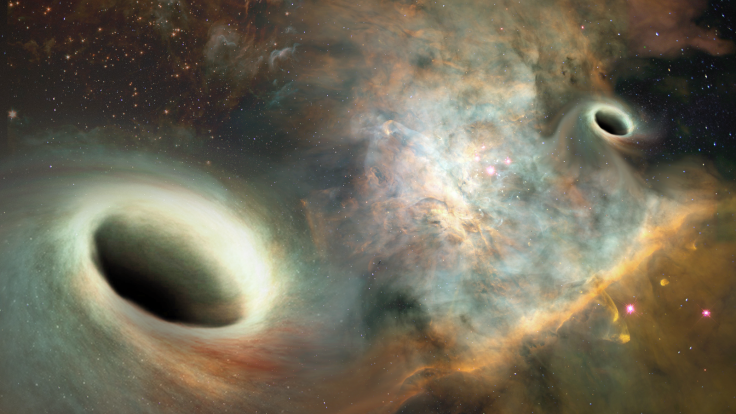Supermassive black holes 750 million light years from Earth observed for first time ever
Discovery will help scientists understand how black holes merge and their role in the evolution of galaxies.

The orbital motion between two supermassive black holes located millions light years away from our planet has been observed and measured for the first time. The discovery will aid scientists in their quest to understand how black holes merge and their role in the evolution of galaxies.
This will also give insight into the fate of our own Milky Way galaxy, the bulk of which may be swallowed up by the inescapable forces of the black hole at its centre, billions of years in from now.
Back in February 2016, scientists announced that they had detected the existence of gravitational waves for the first time, confirming one of Albert Einstein's key predictions.
Gravitational waves are distortions in the fabric of spacetime created when massive objects accelerate through it.
Black holes are among the most massive objects in the universe, with some billions of times denser than our Sun. When two of them crash into each other, strong gravitational waves can be expected.
By documenting the orbital motion of two supermassive black holes, the latest study published in the Astrophysical Journal offers valuable evidence of what leads up to the merger of these celestial objects, one of the phenomenon that create gravitational waves.
Plotting the orbit
In the twelve year-long research, scientists from the University of New Mexico used the Very Long Baseline Array (VLBA), a system made up of 10 radio telescopes across the United States. They were able to observe several frequencies of radio signals emitted by two supermassive black holes located 750 million light years away from Earth.
Using these signals, they plotted their trajectory, providing good evidence that these two black holes are in orbit with one another. The study offers the first observations and measurements of the orbit of supermassive black holes.
The scientists explain that these two black holes have a combined mass of 15 billion times that of our Sun. Their orbital period is around 24,000 years, so while researchers have been observing them for over a decade, they've yet to see even the slightest curvature in their orbit.
"If you imagine a snail on the recently-discovered Earth-like planet orbiting Proxima Centauri - 4.243 light years away - moving at 1 cm a second, that's the angular motion we're resolving here," said Roger W. Romani, professor of physics at Stanford University and member of the research team.
The scientists say the discovery can tell us about the Universe, origins and evolution of galaxies, and the black holes within them.
"The orbits of binary stars provided tremendous insights about stars," Bob Zavala, an astronomer with the US Naval Observatory, commented. "Now we'll be able to use similar techniques to understand supermassive black holes and the galaxies they reside within."
The scientists will continue to monitor the orbit and interaction of these two supermassive black holes. They think this research could also help us gain a better understanding of what the future of our own galaxy might look like.
"Supermassive black holes have a lot of influence on the stars around them and the growth and evolution of the galaxy," concluded study author Greg Taylor. "So, understanding more about them and what happens when they merge with one another could be important for our understanding for the universe."
© Copyright IBTimes 2025. All rights reserved.





















